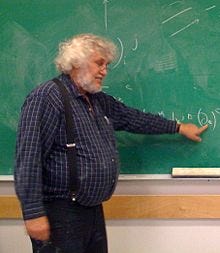New research centering around the Unruh effect has created a set of necessary conditions that theories of quantum gravity must meet.

Quantum physics has, since its development in the early years of the 20th century, become one of the most successful and well-evidenced areas of science. But, despite all of its successes and experimental triumphs, there is a shadow that hangs over it.
Despite successfully integrating electromagnetic, the weak and strong nuclear forces — three of the four fundamental forces — quantum physics is yet to find a place for gravity.
As such, it cannot link with one of physics other great triumphs, that of Einstein’s theory of general relativity. Thus, physicists are currently working hard to develop a quantum theory of gravity.
Now researchers led by the SISSA (Scuola Internazionale Superiore di Studi Avanzati), the Complutense University of Madrid and the University of Waterloo — have identified the sufficient and necessary conditions that the low-energy limit of quantum gravity theories must satisfy to preserve the main features of the Unruh effect.
Any new theory of physics must factor in this effect — this means quantum gravity theories too, must have a place for the Unruh effect and its predictions (which are detailed below).
The new study — published in the journal Physical Review Letters — provides a solid theoretical framework to discuss modifications to the Unruh effect caused by the microstructure of space-time.
Eduardo Martin-Martinez, an assistant professor in Waterloo’s Department of Applied Mathematics, elaborates on the team’s work: “What we’ve done is analyzed the conditions to have Unruh effect and found that contrary to an extended belief in a big part of the community thermal response for particle detectors can happen without a thermal state.”
The team’s findings of importance because the Unruh effect exists in the boundary between quantum field theory and general relativity, and quantum gravity, which we are yet to understand.
“So, if someone wants to develop a theory of what’s going on beyond what we know of quantum field theory and relativity, they need to guarantee they satisfy the conditions we identify in their low energy limits.”
What is the Unruh effect?
The Unruh effect was first described by Stephen Fulling in 1973, followed by Paul Davies in 1975 and William G Unruh — after whom it was named — in 1976.

It predicts that an observer in a non-inertial reference frame — one that is accelerating — would observe photons and other particles in a seemingly empty space while another person who is inertial would see a vacuum in that same area.
In other words; a consequence of the Unruh effect is that the nature of a vacuum in the universe is dependant on the path taken through it.
As an analogy, consider a universe with a constant temperature of zero and in which, no heat arises from the effects of friction or kinetic energy contributions. A still thermometer would have its mercury-level sat permanently at zero.
But the Unruh effect posits that if that thermometer was waved from side-to-side, the temperature measured would no longer be zero. The temperature measured would be proportional to the acceleration that the thermometer undergoes.
Raúl Carballo-Rubio, a postdoctoral researcher at SISSA, Italy, explains further: “Inertial and accelerated observers do not agree on the meaning of ‘empty space.
“What an inertial observer carrying a particle detector identifies as a vacuum is not experienced as such by an observer accelerating through that same vacuum. The accelerated detector will find particles in thermal equilibrium, like a hot gas.”
He further explains that as a result of this, it is reasonable to expect that any new physics that modifies the structure of quantum field theory at short distances, would induce deviations from this law.
Carballo-Rubio continues: “While probably anyone would agree that these deviations must be present, there is no consensus on whether these deviations would be large or small in a given theoretical framework.
“This is precisely the issue that we wanted to understand.”
Defining the conditions theories of quantum gravity must satisfy
The researchers analyzed the mathematical structure of the correlations of a quantum field in frameworks beyond standard quantum field theory.
The result of this analysis was then used to identify the three necessary conditions that are sufficient to preserve the Unruh effect.
Low-energy predictions of quantum gravity theories can be constructed from the results. The findings of this research provide the tools necessary to make these predictions in a broad spectrum of situations.
Having been able to determine how the Unruh effect is modified by alterations of the structure of quantum field theory, as well as the relative importance of these modifications, the researchers believe the study provides a solid theoretical framework to discuss and perhaps test this particular aspect as one of the possible phenomenological manifestations of quantum gravity.
This is particularly important and appropriates even if the effect has not yet been measured experimentally, as it is expected to be verified in the not so distant future.
Original research: https://journals.aps.org/prl/abstract/10.1103/PhysRevLett.123.041601



